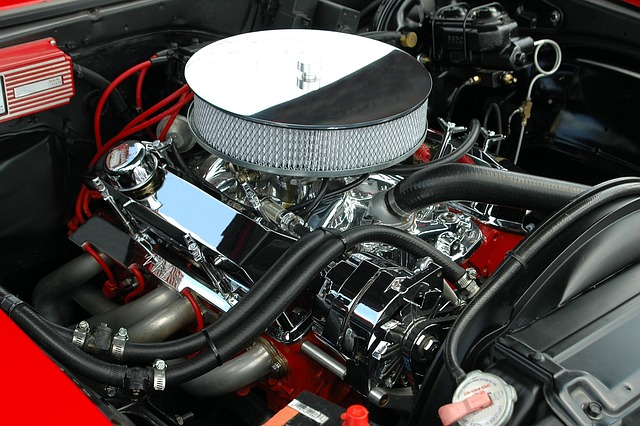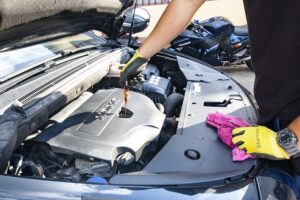Even when you take care to maintain your car over the years, time can wreak havoc on your vehicle’s most important components and systems. Wear and tear inevitably takes a toll on a vehicle, impacting performance, safety, and the overall driving experience. In this article, we discuss some of the most important car components to keep an eye on for signs of significant damage. If you suffer harm due to a defective or dangerous vehicle part, a car accident attorney in Charleston, SC, may be able to help. Read on to learn more about commonly affected vehicle components!
Table of Contents
1. Warning Signs of Engine Troubles
Once you start experiencing engine problems, your car may become undrivable in no time at all. Two critical components of a car’s engine are the spark plugs and ignition coils. Worn spark plugs can fail to generate a strong enough spark on startup. This can cause your vehicle to experience delayed ignition, decreased power, rough idling, and even an engine misfire. On the other hand, failing ignition coils disrupt the flow of electricity. The results of a failing ignition coil are usually similar to those of worn spark plugs.
Another vital component of engine performance is the timing belt or chain. This piece of machinery ensures synchronized operation of valves and pistons. When functioning properly, the timing belt and chain keep the engine operating efficiently and prevent internal damage. When these vehicle components become worn down or damaged, significant engine damage can occur. Regular tune-ups and inspections can identify engine issues before they cause significant problems.
2. Brake Problems Can Be Incredibly Dangerous
Your braking system is incredibly important. Without functional brakes, you won’t be able to reliably bring your car safely to a stop when you need to. When brake issues arise, they must be addressed immediately to protect you and everyone else using the road.
As a car’s brake pads wear down, stopping distances increase, and braking performance deteriorates. One of the first signs of worn down brake pads is a loud squealing, squeaking, or screeching noise emitted whenever you hit the brakes. As your car’s brake pads get thin, they are designed to give off a loud sound to alert the driver that the vehicle requires maintenance. In some cases, the brakes may not be worn down, but the rotors suffer damage from overheating or warping.
Beyond physical components, a car’s braking system relies on a complex hydraulic system and calipers. Leaks, air in the lines, or malfunctioning calipers can compromise a vehicle’s braking ability, which can easily lead to a serious crash. Regular inspections and fluid replacements can help you keep your vehicle’s hydraulic system working smoothly.
3. Early Signs of Transmission & Drivetrain Issues
Problems with your car’s transmission or drivetrain can manifest in a number of ways, many of which can be quite problematic. A worn clutch can cause hard gear changes, grinding noises, and even slipping gears. In some cases, issues with the car’s transmission fluid can be behind the issue. If the fluid is dirty or there is not enough in the system, you can experience a range of transmission problems. Regular fluid changes and trips to the mechanic can help prevent this frustrating issue.
The drivetrain transmits power from the engine to the wheels. Worn or damaged CV joints can be detected through popping or clicking noises that are particularly prominent during turns. Faulty axles can cause vibrations and may make it feel as though the car is pulling in one direction when you drive. Problems with the transmission or drivetrain can put you at risk of serious injury, so issues need to be addressed promptly.
4. Electrical Issues Can Cause a Headache
Modern vehicles rely on their electrical systems far more than vehicles of the past. Recurring issues with your car’s alternator or battery can leave you in some pretty undesirable situations, particularly if your battery keeps dying while you’re out and about. A weak or failing battery can lead to sluggish starting, dimming lights, and even complete electrical failure. The alternator, on the other hand, is the component of your car that constantly replenishes the battery. A malfunctioning alternator will not keep a steady flow of electricity working through your vehicle.
Infographic provided by Goodwill Car Donations, a provider of car donations in D.C.
5. Issues With the Suspension Can Be Uncomfortable to Bear
The suspension system plays a critical role in maintaining passenger stability and comfort, particularly when you’re driving on bumping or uneven roads. Shock absorbers and struts dampen bumps and vibrations, ensuring that you and your passengers can ride in comfort, even on an uneven surface. Worn-out shocks can lead to excessive bouncing and swaying. In some extreme cases, a loss of control is even possible. Ball joints and control arms connect the suspension to the wheels, allowing for steering and articulation. Worn or damaged components can cause clunking noises, uneven tire wear, and even steering problems. Regular inspections and replacement of worn or damaged parts are essential for keeping your ride comfortable and safe.
Protecting Your Vehicle With Proactive Maintenance
By diligently focusing on the five aspects of maintenance that we discussed, you can keep your car performing at a high level for years to come. Regular inspections, preventative maintenance, and prompt repairs can reduce the risk of a breakdown and costly mechanic bills. We hope this article helps you and your loved ones stay safe while on the road!
Featured Image by Paul Brennan from Pixabay




